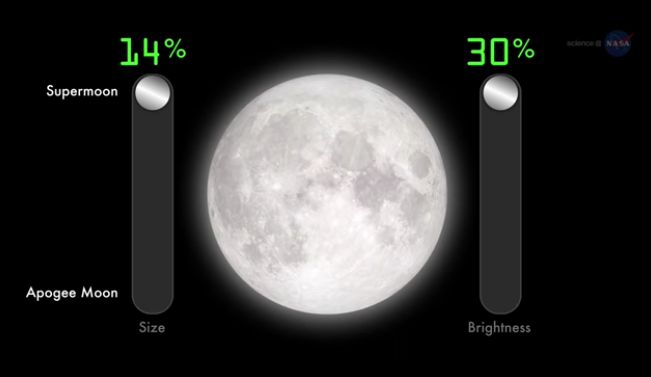The Supermoon Will Be the Largest It Has Been in 68 Years

By:
On the night of November 14, you should take the time to step outside for a rare experience — basking in the largest supermoon since 1948.
The once-in-a-lifetime opportunity is due to the moon being closer to Earth than it has been in 68 years, and it won’t come this close to our planet again for another 18 years.
 YouTube/NASA - youtube.com
YouTube/NASA - youtube.com
The supermoon, also known as a perigee moon, is roughly 30,000 miles closer to Earth and can be as much as 14 percent bigger and 30 percent brighter than at other times. As NASA explains:
Since the moon’s orbit is elliptical, one side (perigee) is about 30,000 miles closer to Earth than the other (apogee). The word syzygy, in addition to being useful in word games, is the scientific name for when the Earth, sun, and moon line up as the moon orbits Earth. When perigee-syzygy of the Earth-moon-sun system occurs and the moon is on the opposite side of the Earth from the sun, we get a perigee moon or more commonly, a supermoon!
According to EarthSky, you can enjoy the superman on the nights of November 13 and 14, 2016. As Gizmodo notes, specifically taking a look in the early morning has its perks for people on the East Coast: “Not only is pre-dawn the closest to the full moon perigee us East Coasters are going to get, but—added bonus—as the moon sets, it can appear unnaturally large, owing to the fact that your brain starts measuring it against other objects on the horizon.”
[h/t Gizmodo]
